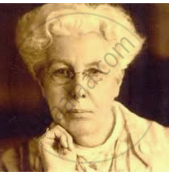Advertisements
Advertisements
Question
The Montague-Chelmsford scheme of Constitutional Reforms was embodied in the Government of India Act, 1919. In this context discuss the main features of the Act of 1919?
Solution
- Dyarchy of Dual Government in the Provinces: Under the Dyarchy the subjects to be dealt by the Provincial Government were divided into:
(i) Reserved subjects, (ii) Transferred subjects. Central Government got subjects of national importance whereas Provincial Government got subjects of local importance. - Enlargement of Provincial Legislative Councils: The Act provided for the establishment of a Legislative Council consisting of the members of the Executive Council, and of nominated elected members.
- Powers of the Governor: The Governor was the head of the executive government in the province. He was supreme and enjoyed extensively legislative powers. He had the power to take over the entire administration in his hands in case of breakdown of Constitutional machinery.
- Supremacy of British Parliament: The Central Executive was not responsible to the Legislature but was responsible to the British Parliament.
- Voting Rights: Many Indians were granted the right to vote as the qualification for voting was lowered for Legislative Assembly. Women were also given the right to vote. The Act extended the communal franchise to other communities also.
APPEARS IN
RELATED QUESTIONS
Between whom was the Lucknow Pact concluded?
Where did Tilak establish the Home Rule League?
Give one main reason why the system of Dyarchy broke down.
Who made the August Declaration 1917?
Why did the Home Rule league demand Swaraj for India?
Give two immediate causes that made the British rulers to come up with the Montague Chelmsford Reforms.
What was the objective of the Montague-Chelmsford Reforms?
What was the significance of the Pact?
What according to you was the most significant contribution of the Home Rule Movement in India.
Answer the following:

(i) Name the lady in the picture given alongside With which national event you can associate this lady?
(ii) Which movement influenced her to launch the similar movement in India?
